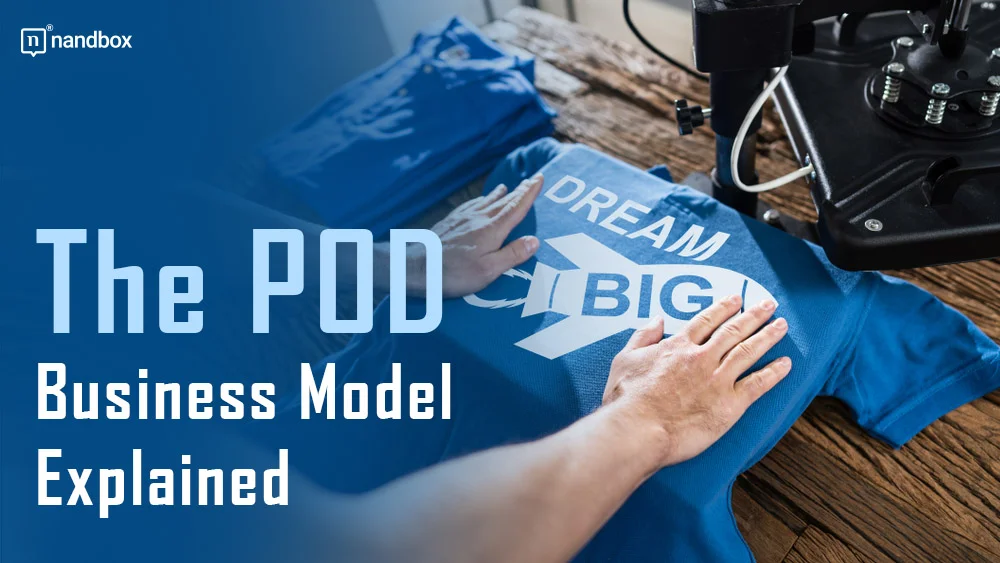Understanding the POD Business Model
The Print on Demand (POD) business model has gained popularity over time. It has revolutionized the e-commerce industry by offering cost-scalable production capabilities and efficient inventory management. In this post, we will delve deeper into how the POD business model operates and explore its advantages for both entrepreneurs and customers.
1. Understanding the Fundamentals of Print on Demand
Print on demand is a business approach that empowers entrepreneurs to create customized products, such as t-shirts, hoodies, and backpacks, without maintaining any inventory. Instead, products are shipped directly to customers as orders are received. This eliminates the need for large-scale production runs and reduces warehousing expenses. Companies like Coastal Reign exemplify this model by offering custom t-shirts, hoodies, and hats tailored to individual orders.
2. Personalization of Products
One of the benefits of the print-on-demand business model lies in its ability to provide products to customers. Whether it’s t-shirts, mugs, smartphone cases, or home decor items, businesses can customize any item with designs or even personal photographs. This level of customization enhances customer satisfaction and boosts brand appeal.
3. Seamless Integration with E-commerce Platforms
To effectively adopt the POD business model, entrepreneurs integrate their stores with print on demand companies that handle the printing, packaging, and shipping processes on their behalf. These print on demand providers usually offer plugins or APIs (Application Programming Interfaces), which simplify workflows by syncing order fulfillment data.
4. Low Upfront Costs
In print-on-demand business models, significant upfront investments are required to purchase stock in advance for potential future sales. This often leads to the risk of having excess inventory or not having enough. In contrast, the POD business model allows entrepreneurs to start their businesses without capital expenditure since products are manufactured on a per-order basis.
5. Flexibility and Scalability
One more advantage of utilizing the POD model is its flexibility; it reduces waste to a minimum, ensuring profitability with low-demand products or market fluctuations. Unlike production models that have limitations on growth due to manufacturing constraints, print on demand enables effortless scalability. Entrepreneurs can easily adjust production volume according to customer demand and explore product categories without concerns about excess inventory management.
6. Reduced Environmental Impact
The POD business model supports sustainability efforts by minimizing waste and reducing environmental impact. Since products are only made when orders are placed, there is no longer a need for large-scale batch production. The days of having unused stock gathering dust on shelves are gone, which benefits both businesses and the environment.
7. Efficient Management of Inventory
Businesses no longer have to handle warehousing, manual inventory management, and tracking stock levels. Also, the POD model completely eliminates concerns related to inventory, allowing entrepreneurs to focus on aspects like marketing and enhancing the customer experience.
8. Improved Customer Experience
Thanks to its products and efficient order fulfillment processes, the POD model offers customers unique shopping experiences. Buyers receive items promptly, leading to increased satisfaction and brand loyalty.
9. Ensuring Quality Control and Production Standards:
One potential concern with the POD business model is maintaining quality across all products. To address this issue, reputable print on demand providers enforce production standards to ensure that every item meets high-quality criteria before being shipped out.
From selecting materials to ensuring print quality, these companies collaborate closely with their partners to ensure customer satisfaction and maintain their brand reputation.
10. Keeping Up with Emerging Trends:
As consumer trends continually evolve, entrepreneurs who embrace the print-on-demand business model have an advantage in adapting and seizing emerging market opportunities. With production cycles compared to manufacturing models, businesses can swiftly introduce new designs, tap into seasonal trends, and optimize their product offerings based on customer demands. This agility becomes crucial for staying competitive in the fast-paced world of e-commerce.
Conclusion
The print on demand business model introduces an approach to e-commerce entrepreneurship – empowering entrepreneurs with increased flexibility, cost reduction, and simplified logistics. Its ability to offer products while minimizing environmental impact makes it an appealing choice for businesses across various industries seeking to captivate customers and expand their brands. Embracing this approach could be what entrepreneurs need to thrive in today’s fiercely competitive online marketplace.




